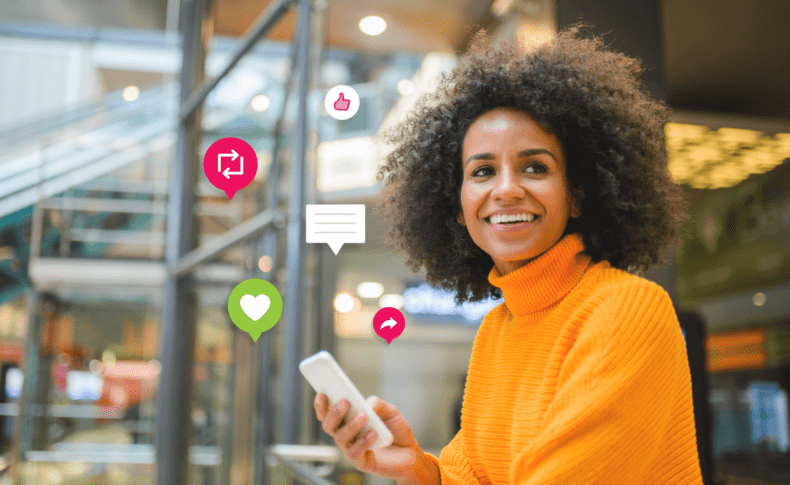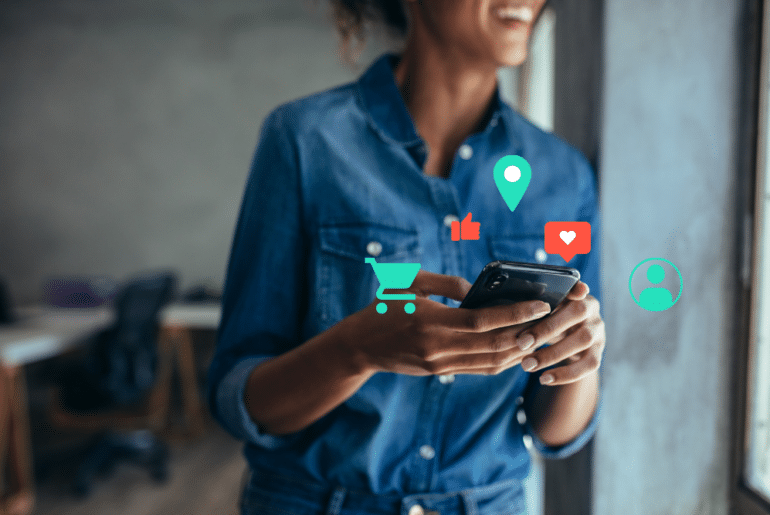In 2020, Forrester coined the term zero party data with the claim that the “Zero Party Data Economy is Here.”
Fast forward to today, and you’ll see the marketing landscape has been transformed by headlines like “Zero Party Data is the New Oil” and “Why Zero Party Data is the New Secret Weapon for Brands.”
Undoubtedly, marketers are trying to figure out how to get their hands on this highly prized data set and collect zero party data.
What is Zero Party Data?
Zero party data is information a consumer shares directly and intentionally with a company or brand. It typically includes personal preferences, emotional leanings, and lifestyle behaviors.
Why Do You Need Zero Party Data?
Modern consumers expect a different relationship with brands today. There is increasing demand for engagement which requires personalization data, but also a need for data privacy.
To meet the needs of the moment, it might feel like you’re being asked to pull off a magic trick. That’s why zero party data is the ace up your sleeve.
As data deprecation and shifting privacy legislation jeopardize marketing effectiveness, marketers are turning to zero party data to create direct consumer relationships.
Zero party data is a way to show consumers that you know them while proving that you are responsible with the information they give you.
Some of the key benefits of zero party data include the following:
- Personalization for Emotional Loyalty – a solutions that collects zero party data opens new opportunities for personalization that drives emotional connection. This includes delivering relevant content, offering individualized website experiences, tailored email campaigns, targeted ads and advertisements.
- Brand Resilience and Data Ownership – zero party data is owned data that insulates your brand from industry shifts like the disappearance of third-party cookies and continued gatekeeping from social media sites.
- Higher Engagement and Advocacy – with the right tools (like an online brand community platform), brands can collect and use zero party data to drive increased brand interaction and advocacy. You can identify brand advocates, promote social sharing, and drive new customer acquisition.
- Audience Insights and Optimized Advertising – collecting zero party data is an excellent way to mine audience insights, uncover emotional profiling, and collect psychographics data to optimize audience targeting and ad spend.
Put simply, when it comes to the future of marketing, successful consumer engagement will be more empathetic, purposeful, and customer-first. Zero party data helps brand marketers achieve this.
What is the Difference Between Zero Party Data and First Party Data? (and Second and Third Party Data, For That Matter)
There are a lot of parties going on here, so know you’re not alone if you’re a little confused.
Broadly speaking, zero party data and first party data can be considered “owned” data, while second and third party data can be considered “rented” data.
There are many differences between zero party data and first party data, but the bottom line distinction is that one is proactively shared data (zero party data), and the other is passively shared data (first party data).
Zero Party Data Quick Facts:
- Personal information is voluntarily given to a brand
- Typically concerns higher-order attributes such as lifestyle, hobbies, values, and behavioral preferences
- Is a strong indicator of trust in a brand
- Highly accurate since it comes from a direct source
- Examples include lifestyle and habits (hobbies, personal interests, values), life stage details, product affinity, shopping preferences, communication preference, emotional connection to the brand, Net Promoter Score, likelihood to recommend, and purchase intent.
First Party Data Quick Facts:
- Data collection happens in the background by a brand observing consumer behavior
- Typically collected by tracking site-wide, app-wide, or on-page behaviors (clicks, session context)
- Broadly transaction-based
- Accurate data given from a direct source but will miss valuable contextual information
- Examples include purchase history, clicks, time spent on page, scroll depth, email engagement, demographic information, and social data.
What About Second Party Data and Third Party Data?
In addition to zero and first party data, there are also third party and second party data. To put it all in context, let’s revisit the overall digital landscape.
Third Party Data Quick Facts
- Third party data has been one of the most widely used sources for advertising campaigns and audience optimization.
- When a bunch of websites take their owned first party audience data and package it to someone else through an aggregator, the data is now considered third party data to that buyer.
- The buyer has no direct relationship with the individual consumer, which means data can become outdated and unreliable. Eventually, this impedes the effectiveness and quality of campaigns.
Third party data has been one of the most widely used sources for advertising campaigns and audience optimization.
The buyer has no direct relationship with the individual consumer, which means data can become outdated and unreliable. Eventually, this impedes the effectiveness and quality of campaigns.
There’s more bad news with relying on third party data: tech giants are doing away with third party cookies, and new privacy legislation that will limit advertisers’ access to consumer data is on the horizon.
Second Party Data Quick Facts
- Second party data is similar to third party data, but it directly accesses another organization’s first party data.
- Second party data requires explicit communication where both companies agree on terms and map out an exchange of data.
- While second party data still puts an intermediary between you and your consumer, the data is considered valuable as you have complete visibility into where the data came from.
- Still, second party data is leased – it must be continuously purchased from another organization.
Now that we know which party means what, let’s talk about how to collect zero party data for your brand.
How to Collect Zero Party Data
In a study by Forrester about zero party data, a whopping 90% of marketers are actively responding to data depreciation by capturing zero party data, yet 42% admit they don’t know how to use zero party data effectively.
Before brands can approach the question of how to use zero party data, they must collect it in the first place – but not all collected data will be relevant data.
With this in mind, the real question marketers should be asking is, “How do I collect zero party data in a way that is valuable for my business?”
While it might sound challenging to get consumers to share their data proactively, most people are willing to share if they know there is value in return. Research has found that 80% of consumers are willing to share data in exchange for more value and a better experience.
There are numerous touchpoints in your brand’s digital ecosystem where you can collect relevant zero party data.
Registrations
Whether signing up for an ecommerce account or subscribing to your email list, any registration moment is a great time to collect zero party data.
For example, if you’re a food brand, this is an excellent opportunity to ask consumers about dietary preferences in their households.
Look at the brand Care/of, which has built its entire business model on offering personalized vitamins. Upon visiting their website, the first thing potential consumers are prompted to do is to take a quiz.
Once users click to get started, they agree to spare a few moments to answer simple yet probing questions about demographic, lifestyles, interests, and feelings associated with specific medicinal approaches.
Questions like:
- “Are you a skeptic when it comes to vitamins?”
- “Are you curious, or are you an expert?”
- “Are you open to trying new things?
- “Are you only going to listen to a Harvard trained primary care?”
Based on a consumer’s answers, they are delivered further relevant questions. For example, if you select that your top health goal is “immunity support,” you’ll be asked questions about current health conditions or exposure to others through things like public transportation.
One significant step Care/of takes is adding a “Why We Ask” button to each question. This is important because it offers consumers transparency into why certain information is being collected.
Gone are the days of brands hoarding as much data as possible from consumers without an explanation as to why. Adding transparency into your data collection process helps instill confidence in a consumer that you are responsible with their data.
Profile and Preference Centers
Brands want to be careful about asking for too much information upfront. This could cause a consumer to turn away from the brand entirely.
- One way to collect zero party data beyond registration is through a profile or preference center.
- This helps build a progressive profile for each consumer with an always-on, evergreen approach that stores information in small intervals over time.
- Preference centers usually address notification opt-ins and email frequency, but you can add additional areas to address lifestyle, hobbies, values, and more.
- With the right tools, you can use new profile information to deliver automated engagement that helps you achieve 1:1 messaging at scale.
Take a look at Le Creuset’s email preference center. They don’t just ask which emails consumers would like to receive; they take the opportunity to learn color preference, cooking abilities, and what kind of cookware they currently own. The messaging is pulled together to feel warm and genuine, and to provide value to the consumer.
An Online Brand Community
An online brand community is a dedicated destination for consumers to connect with your brand and other like-minded people. With the right technology, online communities are perfect for collecting and acting upon zero party data.
Additionally, because online communities are about connection and conversation, consumers are more willing to share broader, value-based information like personal interests, hobbies, and lifestyle behaviors. This kind of information can be a goldmine if you use it right.
- Unilever’s fast-growing brand, Sir Kensington’s, is a challenger brand in the condiment space that competes against established players like Heinz.
- They started their Taste Buds online brand community as a place to connect with consumers more meaningfully.
- They do this by collecting zero party data, delivering personalized engagement, and mining audience insights.
Using an online community supplies numerous opportunities to collect zero party data. This includes surveys, polls, UGC & product review campaigns, in-home events, discussion boards, and more.
For example, upon signing up for the community, Sir Kensington’s delivers a “Getting to Know You Survey” and a welcome activity for new members to get acquainted.
Sir Kensington’s uses their owned brand community to collect information related to flavor preferences and shopping habits. However, they also ask how their community members would like to be engaged as a consumer. This creates trust and shows that they will listen to them when they share feedback.
Micro-Experiences Such as Interactive Content, Giveaways & Contests
Another way to collect zero party data is through interactive content. Any entertainment is a great way to collect zero party data. However, transparency is always important in these kinds of campaigns so consumers don’t feel like they’re being tricked by participating.
MAC Cosmetics launched a product sampling program with augmented reality, where consumers participate in a product-matching, virtual try-on experience.
- After the automatic shade match, the customers claim their sample.
- The experience combines A.R. try-on and personalized A.I. shade matching with the convenience of physical product sampling.
- This type of campaign allows the brand to collect zero party data that can be used in later remarketing campaigns while also engaging the consumer in a product trial.
Loyalty & Rewards Program
While most loyalty programs are transactional by nature, there are opportunities to collect information beyond purchase history or demographic information, especially regarding rewards they find most appealing.
- Loyalty programs often present a straightforward ask/receive pattern. While this makes building emotional connections tough, it can make data collection easier.
- You can offer points, discounts, free shipping, free trial, brand swag, and VIP access in exchange for providing zero party data.
Sneaker brand, Skecher’s, created their Skechers Plus loyalty program through which members can earn points and redeem them for reward certificates and other offers. They can earn points through purchases as well as provide personal data to the brand.
Information is collected digitally by answering surveys and participating in quizzes. Upon signup, a new loyalty member can answer questions about shoe size and where they will most likely wear their Skechers.
How TINT Helps Brands Collect Zero Party Data
- We empower brands to take back their consumer relationships from third party sites and build always-on owned data engines.
- Our all-in-one, online brand community platform secures your consumer relationships, mobilizes your brand advocates, and captures zero party data to accelerate the speed to ROI of all your marketing efforts.




